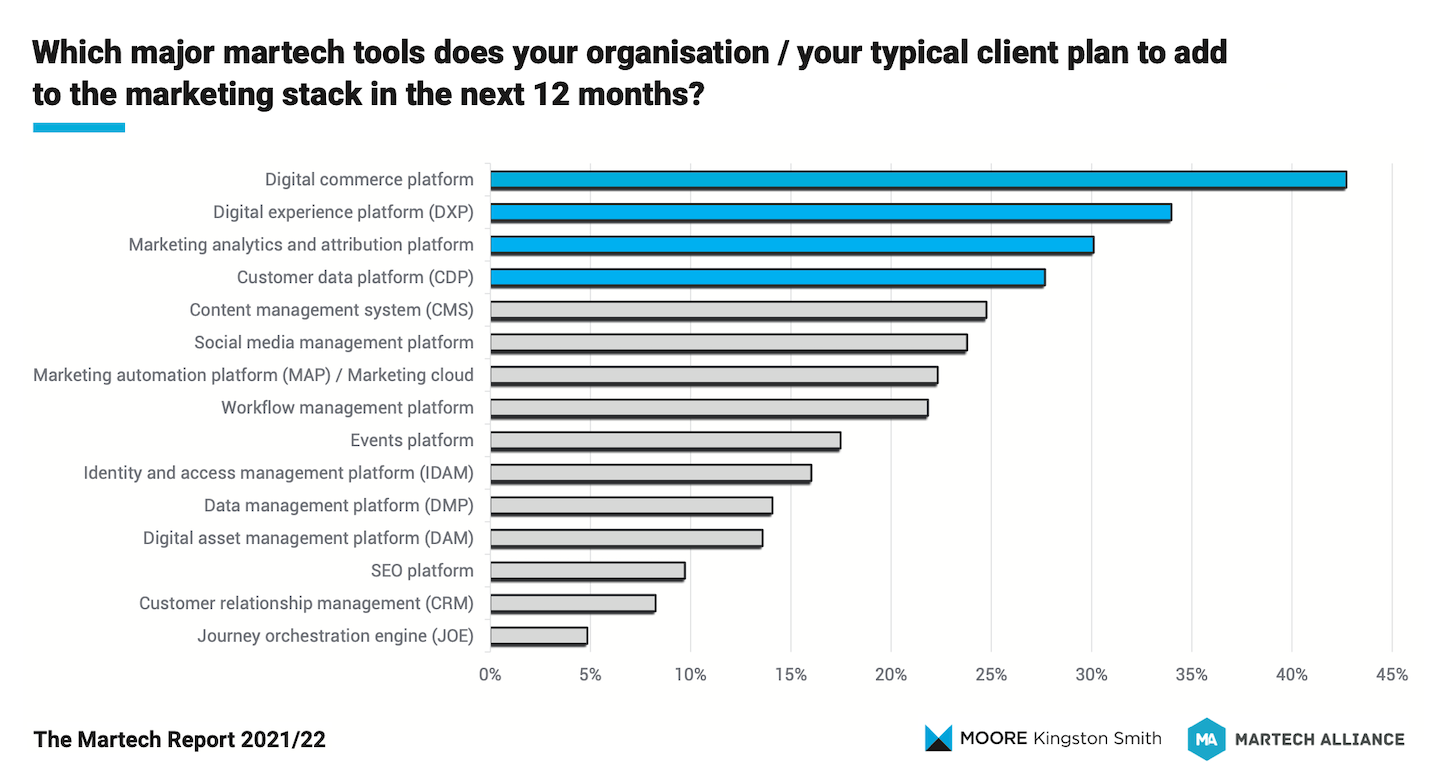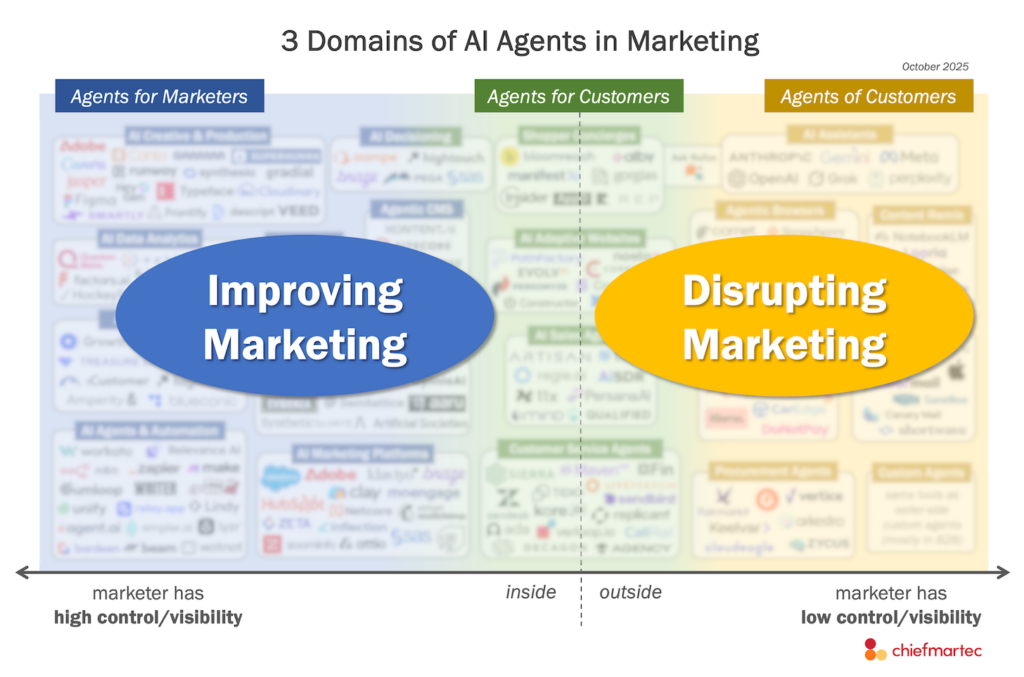
First, welcome to the freshly updated chiefmartec.com site — or, if you’re reading in this in your inbox, our freshly updated email subscription service, a big step up from RSS-to-email through Google Feedburner. What’s that thing they say about the shoemaker’s children? Well, now we finally have some groovy new footwear. Metaphorically speaking. Anyway, on with the show…
The effect the pandemic has had on all things digital has been enormous. For all the talk about digital transformation over the past decade, these past 18 months have forced businesses to cannonball into the deep end of the digital pool. Quite a splash. And while there are many different facets of that transformation we could cover, by far the biggest one economically-speaking is the explosion of digital commerce.
Ecommerce, one of the oldest categories of the martech landscape, is new again.
Buyers have embraced online purchasing and payment in nearly every aspect of their lives. Because, hey, we had no other choice. And now it is the new normal.
Where buyers go, marketers follow. And where marketers go, martech rushes to empower them. So surprise, surprise, commerce-related martech is probably the hottest category in the landscape today. And I’ve got two reports that attest to this.
The chart at the top of this post is from The Martech Report 2021/22 published last week by the team at MarTech Alliance. Asked about major martech tools that organizations plan to add to their marketing stacks in the next 12 months, the #1 answer — by 9 points more than the next most popular choice — was digital commerce platforms at 43%.
The second most anticipated addition by 34% of respondents? Digital experience platforms (DXP), which, frankly, are often the engines through which commerce-related content and experiences are deployed.
Third was marketing analytics and attribution platforms at 30%. Because the closer marketing gets to actual revenue transactions the more critical this capability becomes.
And this isn’t just happening in B2C.

Arguably the most exciting area of digital commerce right now is the great shift in B2B purchasing going online. Gartner’s latest CMO Leadership Vision 2022 report, which features the above chart, predicts a 12 point shift in B2B procuring that will happen through website channels in just the next two years.
By 2023, 37% of B2B procuring will happen through websites.
That’s hundreds of billions of dollars now shifting into a channel where the CMO and the marketing organization have far more influence and control. The additional 12 points are being taken away from salespeople (down 4 points), other online channels such as legacy EDI (down 2 points), and, of course, other offline channels (down 7 points).
For marketing technologists and marketing operations professionals, building and orchestrating this next generation of commerce capabilities — embedded into digital experiences and backstage workflows — is going to be a massive opportunity to deliver measurable value.
Directly put the revenue in revenue operations (RevOps).


